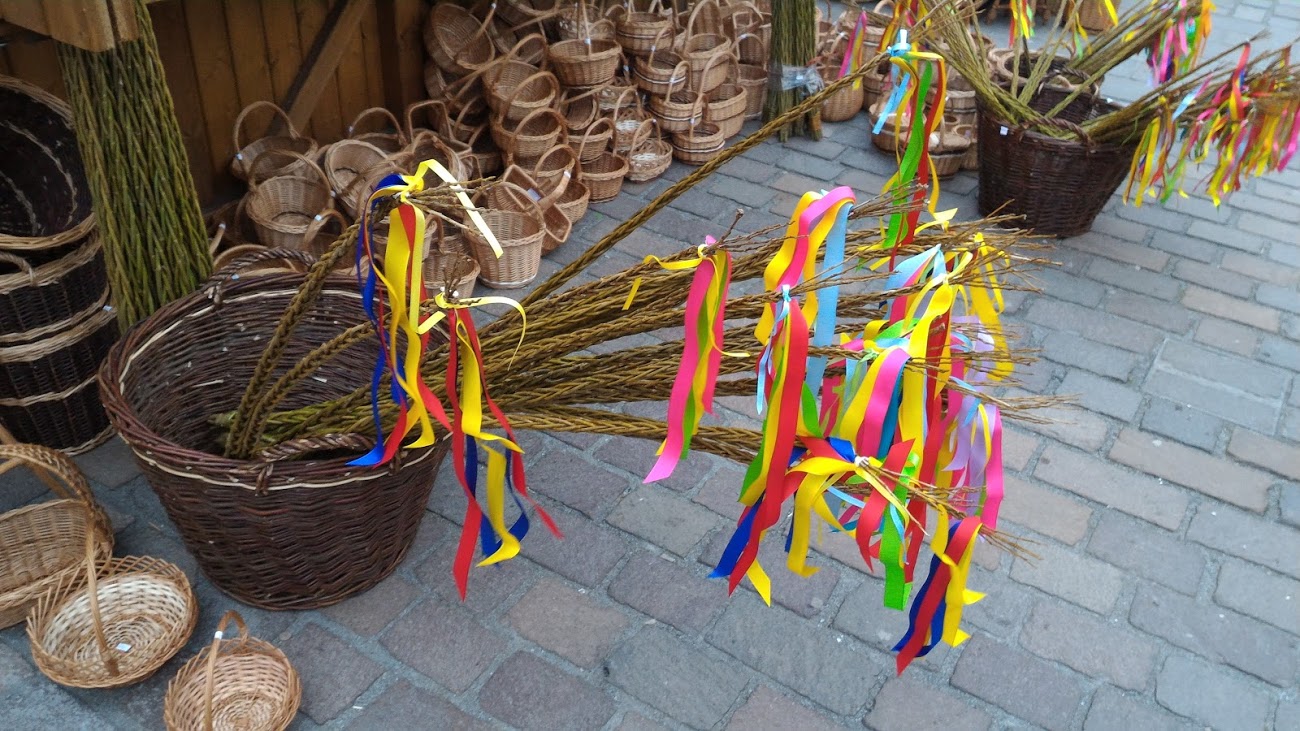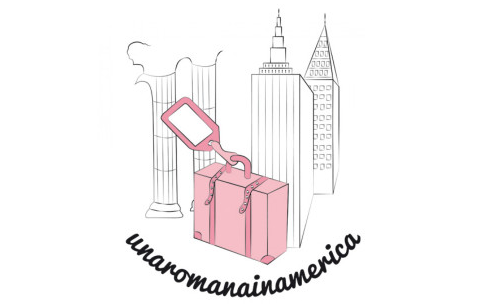Pilsen (Repubblica Ceca) – 20 marzo 2016

Oggi, approfittando della bella giornata, con la mia fidanzata Michaela e con i miei futuri suoceri siamo nella piazza principale della città, per fare un giro tra le casette di legno dei tradizionali e coloratissimi mercatini di Pasqua.
Anche se sono più piccoli preferisco decisamente quelli qui a Pilsen rispetto a quelli di Praga, perché qui mi sento realmente all’estero,
contornato solo da persone che parlano una lingua diversa dalla mia e che ancora si stupiscono per un attimo quando mi sentono dire qualche frase in italiano, gente per lo più nata e cresciuta tra i vicoli, le strade e i quartieri di questa città, senza quell’atmosfera di “internazionalità forzata” (e a volte fastidiosa) che si respira girando per Praga in questi giorni.

Respirando il profumo del vino caldo e delle salsicce che arrostiscono sulla griglia, giro un po’ assorto tra ceste di vimini intrecciati piene delle meravigliose uova artistiche colorare (ben diverse da quelle che sono riuscito a ottenere nel corso dei miei esperimenti casalinghi e decorate, come vuole la tradizione, utilizzando colori naturali ottenuti dagli alimenti) e come ogni anno mi stupisce la quantità spropositata di dolcetti di pan di zenzero esposti ovunque!

Ma il motivo principale per cui mi trovo qui oggi è di procurarmi lei: la pomlázka, ovvero la tradizionale frusta fatta di ramoscelli di salice intrecciati, l’oggetto dalla storia più affascinante tra tutti quelli esposti, una delle cose che davvero non possono mancare in casa in questo magico periodo dove, qui in Repubblica Ceca più che in altri luoghi, le tradizioni cristiane posticce si mescolano con gli antichi riti pagani legati alle divinità della natura.

Anticamente la pomlázka non si trovava esposta sulle bancarelle (o perfino nei supermercati), ogni ragazzo del paese costruiva da solo la propria frusta di ramoscelli intrecciati, per poi girare di casa in casa, nel giorno del lunedì di pasquetta, a “frustare” scherzosamente sulle gambe o sul sedere le ragazze o le donne in generale che incontrava, in modo da garantire loro bellezza, giovinezza e salute per tutto il resto dell’anno.
In cambio, il ragazzo chiedeva quindi, recitando delle tipiche filastrocche, un piccolo regalo (di solito uova colorate o caramelle) e la ragazza di turno, in segno di riconoscenza, aggiungeva anche un nastrino colorato alla sua pomlázka: avere molti nastrini legati alla propria frusta era un motivo d’orgoglio.
In tempi ancora più remoti alla pomlázka era attribuita addirittura la capacità di tenere lontani spiriti maligni e malattie, per questo non solo le donne, ma tutti i componenti della famiglia (bestiame compreso) dovevano ricevere una leggera frustata, che gli garantisse protezione per i mesi a venire.

Mentre tra me e me ripenso a tutto questo me la ritrovo davanti: la pomlázka, a venderla è una simpatica vecchietta tutta indaffarata dietro al banco e mi viene da pensare che, se le persone che passano di qui fossero più disoneste, glie le potrebbero portare facilmente via sotto il naso, visto che la sorridente signora, oltre che ceca, è anche cieca!
Comunque, insieme alla mia ragazza, ne scelgo una e pago: 60 Kč per quelle grandi (poco più di due euro) anche per quest’anno la tradizione è rispettata, non resta che aspettare il lunedì di Pasqua!
Trovarmi costantemente immerso in una cultura diversa dalla mia è per me una sensazione unica, uno stimolo costante per la mia naturale curiosità (dicono che sia femmina, ma io credo che in realtà, seppur in modo diverso, accomuni un po’ tutti quanti).
Adoro ascoltare la gente che parla intorno a me, sentire che ogni giorno che passa riesco a cogliere qualche nuova frase di una lingua che per molto tempo mi era sembrata inaccessibile, a comprendere il significato di una battuta fatta poco lontano, leggere i cartelli e comprenderne il significato, sentire che più i giorni passano e più tutto quello che inizialmente mi sembrava estraneo, comprese le abitudini quotidiane, le tradizioni legate alle festività, il profumo nell’aria mi diventa piacevolmente familiare e non mi sento più impacciato e spaesato come i primi tempi, ma ormai riesco a muovermi e comportarmi con naturalezza.
Mi rendo conto di essere cambiato molto anche dentro, la mia mentalità e il mio modo di vedere le cose sono decisamente cambiate in meglio, e mi sento davvero fortunato di poter fare questa esperienza di vita, che solo qualche anno fa mi sarebbe sembrata impossibile.

Marco Ciabatti è nato 35 anni fa a Bibbiena, un piccolo borgo toscano in provincia di Arezzo. Da sette anni è fidanzato con Michaela, una ragazza nata e cresciuta a Pilsen (la capitale boema della birra).
Dopo una lunga fase di relazione a distanza, Marco ha deciso di chiudere la sua attività di geometra e di cambiare totalmente vita, trasferendosi a Praga insieme alla sua compagna. Dall’amore per questo paese, per la sua storia e per le sue tradizioni qualche anno fa è scaturita l’idea di aprire un blog dove poter raccontare gli aspetti meno conosciuti di questa terra ricca di fascino.
Attualmente svolge l’attività di guida turistica per italiani.
Though significantly smaller than the ones in Prague, the markets in Pilsen are my favorites as Itruly get the feel for life abroad here, surrounded exclusively by folks who speak a different language than mine and who still act surprised whenever they hear me speak Italian. Folks who were born and raised in the city’s little alleys, streets and quarters and are strangers to the almost artificial international vibes we breathe in Prague these days.
The air smells like mulled wine and grilled sausages as I’m admiring wicker baskets filled with gorgeous brightly colored, hand painted – only with natural food dyes, as per tradition – Easter eggs ( clearly different than the ones I’ve been practicing with at home ) and, like every year, I’m amazed at the massive quantities of gingerbread treats shown everywhere.
The main reason I’m here today, though, is to find the item with the most interesting and charming background among all of the other classic pieces sold in any Czech Easter Market: the pomlazka, a traditional whip made of braided willow twig.
These holiday branches are a must have in every home, during this magical time of the year, where, here in the Czech Republic, more than in any other place, have both Christian and Pagan roots.
In ancient times the Easter Pomlazka wasn’t available for purchase in market stalls or
supermarkets.
Almost every man in the country, from boys to grown ups, used to make their own Pomlazka and walk from house to house, on Easter Monday, looking for girls to symbolically whip with the Easter stick in the legs or in the bums. This was done, as the legend goes, to guarantee beauty, good health and youth to all of them for the rest of the year.
In return, all male visitors would receive, while saying traditional rhymes, dyed hard boiled eggs or candy and a colorful ribbon tied around their whip as a thank you gift. Getting their whip adorned with as many ribbons as possible was a matter of cultural pride for all Czech men.
Originally, Pomlazka was also used as a ritual to keep away disease and evil spirits. For that reason, all women, as well as all members of the family, including their animals, needed to be whipped to stay healthy in the coming year.
I happen to come across a Pomlazka, while thinking about it. The vendor behind the little wooden hut is a cute old lady, and I can’t help but wonder that, if people were more dishonest, they would steal from her, rather than buying, because she’s blind.
My fiancée and I pick one and pay 60 kč, which is the price for the big ones ( a little over 2 USD ).
Job done, even for this year tradition is respected.
Now, all we have to do is wait for Easter Monday.
It’s always a great feeling being part of a culture so different than my own. It’s that constant incentive that keeps my curiosity alive ( they call it female curiosity, but I believe that, although it strikes in many different ways, curiosity lives in each and everyone of us ).
I love to listen to people talking around me and realize that I’m catching more and more phrases of a language I considered inaccessible for a long time. It’s wonderful to understand a joke, being able to read signs and recognize that, as times goes by, everything I had the hardest time relating to, from festivity traditions to a simple daily task, is slowly changing and the air that I breathe is now pleasant and familiar if you will. I no longer feel I don’t belong like I did when I first moved here and
I’m finally able to say that I feel like myself again. I noticed I’m not the same person on the inside either. My mentality and my outlook on life have changed for the better and I’m blessed to have the opportunity to experience life abroad. A chance
I would have never thought possible until it happened.
After a period of long distance relationship, Marco decided to end his surveyor career and make a major change in his life by moving to Prague with Michaela.
The love for the Czech Republic, its history and its traditions convinced him to open his own blog a few years ago, where he reveals many unknown and unusual facts that pertain to this charming, wonderful land.
At the moment he’s working as a tour guide for the Italian tourism.
blog
facebook page
website

